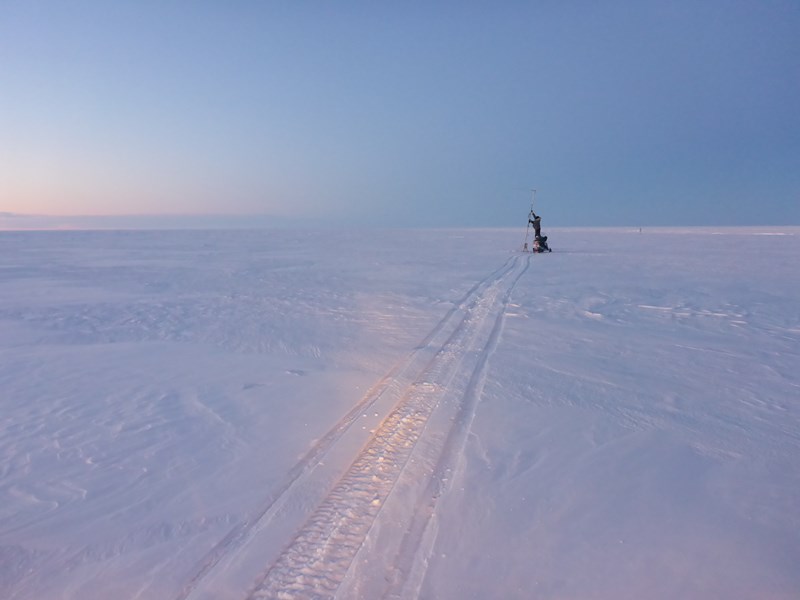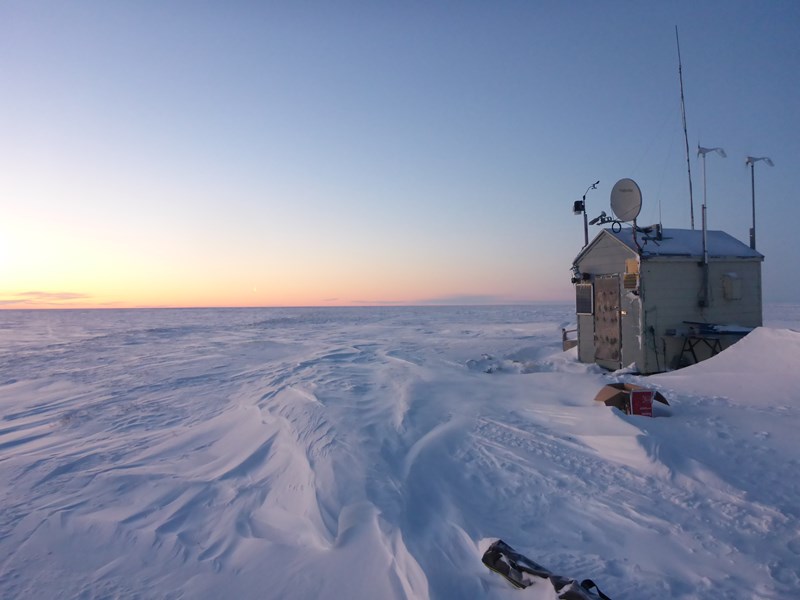- Dec 2
- Children of the Arctic
- Apr 18
- Snow, Wind, and Ice
- Apr 16
- Lesson from the Arctic
- Apr 14
- I Love Doing Science!
- Jan 28
- Bouncing Back in Whiteness
- Jan 27
- The Magical SAR Queen Rules!
- Jan 26
- Arctic Winter Science
- Jan 25
- A Day to Chill
12/2/2018
Winds shifted and greatly lessened last night providing a view across Teshekpuk Lake this morning by 10am. We decided to stay an extra day so we could get some work done up at Drew Point. Up until now has been too windy to fly an aerial survey of the bluff edge with Ben’s new drone.

Getting ready to go out today was much more relaxing than the last few days. Mostly because it was so much nicer out and was enjoying the thought of getting out to bounce up north being able to take in the landscape. Some preacher was on KBRW rapping about some difference between bibles that a BFD to him and could dictate our rewards upon entering heaven. Then it switched to NPR’s Mountain Stage and this cool musician shared some super cool songs and stories ranging from gun policy to what he’s learned from his kids, plus Jesus’s dismay with modern adults and relief in children.

Ice data we’ve collected on this trip is mostly in line with previous early winter adventures. Very thin for this time of year and lakes are generally deeper. Ice thickness averaged about 42 cm on Dec-1. Based on observation calibrated models from last 40 years, Dec-1 ice thickness averages 77 cm and ranges from 40 to 110 cm. Previous two years have been about 40 cm. Not only that, but higher lake levels is making it take even longer from for many lakes to freeze solid (thus protecting permafrost below lakes and the carbon stored in it). We published a recent paper on the subject of thin ice and processes controlling it.

Been thinking about what we’ve learned from doing winter trips in the Arctic and where to go next. Lots of possibilities, maybe the questions are “who has the biggest stake?” in our work and “who is most interested in learning about their precious and fascinating environment?” The answer is kind of obvious. Its young people who live the north where ice and snow are still regular parts of life. I’m very excited because we have a new opportunity to reach these stakeholders through a freshwater ice observation networks called “Fresh Eyes on Ice”. It’s a NSF AON project with multiple observation components, remote sensing, sensor and camera networks, field measurement like the one were doing right now, but also a community-based monitoring component were we’ll work with schools in Alaska towns and villages to make systematic observations and do special projects related to ice on rivers and lakes to get kids excited about arctic science. Thing is I bet we’ll learn a lot from the kids and maybe even get some new arctic scientists invigorated to better understand our arctic system.
11/30/2018
11/29/2018
11/28/2018
11/27/2018
4/21/2018